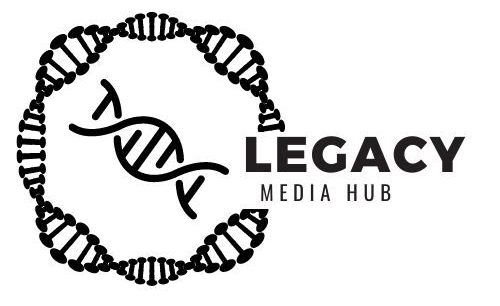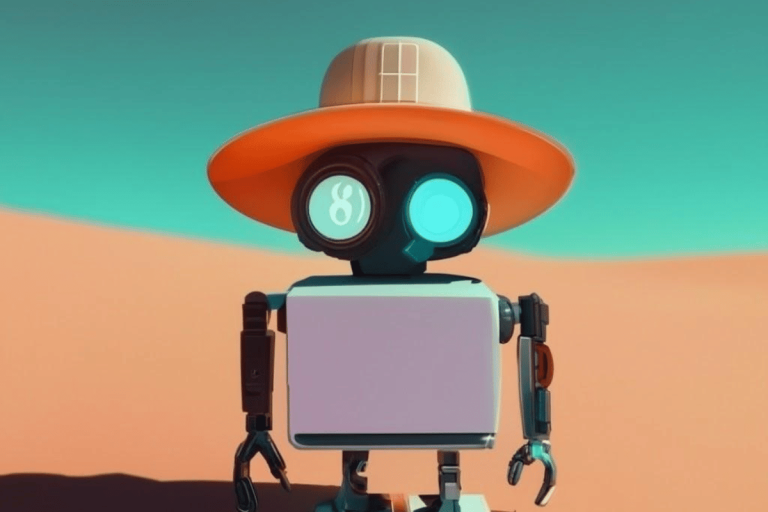When I first started studying AI, I was sceptical. I saw it as a threat to jobs and a danger to humanity. But in the years since, my attitude has changed. I’ve come to see AI as a powerful tool that can be used to solve some of the world’s biggest problems.
I believe that AI has the potential to improve the lives of billions of people. It can help us to create a more sustainable world, to cure diseases, and to explore new frontiers of knowledge.
Of course, there are risks associated with AI. But I believe that the benefits outweigh the risks. That’s why I’m optimistic about the future of AI.
I urge businesses to embrace AI with a glass-half-full perspective. AI is a powerful tool that can be used to improve efficiency, boost productivity, and create new opportunities.
It has already transformed the world with cat memes and social media marketing campaigns that elected people and sold goods and services that many regretted after they had made emotional decisions.
Now we, as in the people I know, understand AI has been around for decades and only now it is being leveraged by people of all ages and with little or no budget in many cases. Although if you haven’t watched the social dilemma you must remember nothing is free…if you don’t pay for the product then you are the product.
A brief look into the history of AI
Here is a list of some of the most notable developments in AI since before it was called AI:
- 300 BC: Aristotle describes the concept of a syllogism, which is a logical form of reasoning that can be used to create rules-based AI systems.
- 13th century: Roger Bacon writes about the possibility of creating artificial machines that can perform tasks that are typically done by humans.
- 17th century: René Descartes develops the concept of dualism, which separates the mind from the body. This opens up the possibility of creating artificial minds that are not dependent on physical bodies.
- 18th century: Gottfried Wilhelm Leibniz proposes the idea of a universal language that could be used to represent all knowledge. This could be used to create AI systems that can understand and reason about the world in a comprehensive way.
- 19th century: Charles Babbage designs the Analytical Engine, which is a mechanical computer that could be programmed to perform any mathematical operation. This is considered to be an early precursor to modern computers.
- 20th century:
- 1950: Alan Turing publishes his paper “Computing Machinery and Intelligence”, which introduces the Turing test as a way to measure machine intelligence.
- 1956: The Dartmouth Summer Research Project on Artificial Intelligence is held, which is widely considered to be the birth of the field of AI.
- 1960s: Early AI programs are developed, such as ELIZA, a chatbot that could simulate human conversation, and Shakey, a mobile robot that could navigate obstacles.
- 1970s: AI research experiences a setback, known as the “AI winter”, due to overpromising and underdelivering on results.
- 1980s: AI research begins to recover, and new techniques are developed, such as expert systems and machine learning.
- 1990s: AI begins to be used in a wider range of applications, such as speech recognition, image processing, and natural language processing.
- 2000s: AI research experiences a renaissance, driven by advances in computing power and machine learning algorithms. AI systems are developed that can outperform humans at a variety of tasks, such as playing games, recognizing objects in images, and translating languages.
Developments in AI since 2010:
- 2011: IBM Watson wins the game show Jeopardy!, demonstrating the power of AI to answer complex questions in real time.
- 2012: Google launches the first self-driving car project.
- 2014: OpenAI is founded with the goal of developing safe and beneficial AI.
- 2016: AlphaGo, a computer program developed by DeepMind, defeats a professional Go player for the first time.
- 2017: Google launches Google Translate AI, which can translate between 100 languages more accurately than previous translation systems.
- 2018: OpenAI releases GPT-2, a large language model that can generate realistic and coherent text.
- 2019: Google AI releases BERT, a transformer-based language model that achieves state-of-the-art results on a variety of natural language processing tasks.
- 2020: OpenAI releases GPT-3, a massive language model that is even more powerful and versatile than GPT-2.
- 2021: Google AI releases PaLM, a 540-billion parameter language model that is the largest and most powerful AI language model ever created.
- 2022: AI is used to develop new drugs and vaccines, predict natural disasters, and create new forms of art and entertainment.
- 2023: AI investments have grown incrementally to support the cloud and hybrid workflows including the announcement this week ~Amazon who are investing up to $4 billion in AI startup Anthropic, giving it access to Anthropic’s AI technology and making Amazon Anthropic’s “primary” cloud provider. The deal is seen as a move by Amazon to compete with Microsoft, Google, and Nvidia in the AI market.
These are just a few of the many many developments that have taken place in AI in recent years. AI is a rapidly evolving field, and new advances are being made all the time.
So to the current use of AI
The AI developments that are happening right now are truly amazing because they have the potential to revolutionise many aspects of our lives. For example:
- Language models: Large language models like LaMDA and PaLM generate text, translate languages, write different kinds of creative content, and answer your questions in an informative way. This could lead to new and innovative ways to communicate, learn, and create.
- Text-to-image models: Text-to-image models like Imagen can generate realistic images from text descriptions. This could be used to create new forms of art and entertainment, or to help people with visual impairments understand the world around them.
- Code generation models: Code generation models like Parti can generate code in a variety of programming languages. This could make it easier for people to learn to code, and it could also help developers to be more productive.
- AI video creation chatbots that can have live conversations with video are a new and emerging technology, but they have the potential to revolutionize the way we interact with computers. These chatbots can be used to create personalized and engaging video experiences for a variety of purposes including healthcare, education, sales and marketing, customer service and more…
These are just a few examples of the many amazing things that AI is capable of. As AI continues to develop, we can expect to see even more innovative and transformative applications of this technology.
Here are some specific examples of how AI is being used to make a positive impact on the world today:
- Healthcare: AI is being used to develop new drugs and treatments, diagnose diseases more accurately, and provide personalised care to patients.
- Education: AI is being used to create personalised learning experiences for students, identify students who need extra help, and provide feedback to teachers.
- Climate change: AI is being used to develop new renewable energy sources, reduce pollution, and predict extreme weather events.
- Poverty and hunger: AI is being used to develop new farming techniques, create more efficient supply chains, and distribute food more equitably.
Of course, there are also potential risks associated with AI, such as the possibility of job displacement and the misuse of AI for malicious purposes. However, I believe that the potential benefits of AI far outweigh the risks. If we develop and use AI responsibly, it has the potential to make the world a better place for everyone.
Many big tech companies are promoting their AI developments and using them to sell their products. And lots of legislation has been developed to ensure that AI is used responsibly, we still have a long way to go in both the deployment, application and the legislation of AI. Here’s to a bright future…
If a friend or colleague shared this newsletter with you, you can sign up to receive it every week here on LinkedIn.
Or here https://subscribe.legacymediahub.com/
And if you have comments on this issue and/or ideas for future ones, drop us a line at info@legacymediahub.com
Sources:
Reference links
- Amazon SageMaker Canvas: https://docs.aws.amazon.com/sagemaker/latest/dg/canvas.html
- Amazon CodeGuru: https://aws.amazon.com/codeguru/
- Amazon Rekognition: https://docs.aws.amazon.com/rekognition/latest/dg/what-is.html
- Amazon Polly: https://aws.amazon.com/polly/
- Google PaLM: https://www.merriam-webster.com/dictionary/palm
- Google Imagen: https://imagen.research.google/
- Google Parti: https://parti.research.google/
- Google LaMDA: https://blog.google/technology/ai/lamda/
- IBM Watsonx: https://www.ibm.com/watsonx
- IBM Watsonx.data: https://www.ibm.com/products/watsonx-data
- IBM Watson Discovery: https://cloud.ibm.com/catalog/services/watson-discovery
- IBM Maximo Asset Management: https://www.ibm.com/products/maximo/asset-management
- Microsoft Azure Cognitive Services: https://azure.microsoft.com/en-us/products/ai-services
- Microsoft Azure Machine Learning: https://azure.microsoft.com/en-us/products/machine-learning
- Microsoft Azure Databricks: https://azure.microsoft.com/en-us/products/databricks
- Microsoft Power BI: https://powerbi.microsoft.com/en-us/
- Meta AI: https://ai.meta.com/
- OpenAI: https://openai.com/
- Hugging Face: https://huggingface.co/
- Ft.com https://www.ft.com/content/1621f6ee-41da-48a7-98c9-fa161883dc6f%5D
- VideoAsk: https://www.videoask.com/
- Colossyan: https://www.colossyan.com/
- CoRover: https://corover.ai/
- Synthesia: https://www.synthesia.io/

